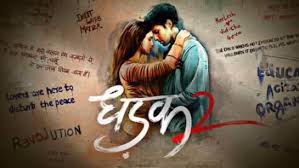Dhadak 2: Shazia Iqbal destroys ancient Bollywood Dharma in the best Karan Johar production since Jigra

When Dhadak released in 2018, it marked the glossy, romanticised debut of two star kids—Janhvi Kapoor and Ishaan Khatter—backed by the formidable force of Dharma Productions. While the film was a box-office success, it received harsh criticism for erasing the caste politics at the heart of Sairat, the Marathi film it remade. Now, in a remarkable reversal, Dhadak 2 arrives not as a conventional sequel, but as a cinematic correction—an artistic reckoning. Directed by the fierce and focused Shazia Iqbal, this new chapter doesn’t just revisit the Dhadak universe; it burns it down and rebuilds something raw, honest, and necessary.
This isn’t just a sequel. It’s a statement. And perhaps the most radical thing about it? Karan Johar—the very filmmaker often associated with opulence and escapism—has produced it.
A New Voice in the Dharma House
Shazia Iqbal may not be a household name yet, but after Dhadak 2, she certainly deserves to be. Known for her uncompromising short film Bebaak, Iqbal brings her sharp eye, political clarity, and emotional depth to a mainstream project—and it shows. The film doesn’t play safe. It confronts caste discrimination, class divides, and the messy intersections of love and systemic violence with brutal honesty. And all this under the banner of Dharma—a production house once synonymous with designer saris and Switzerland backdrops.
For once, Johar’s name on a film doesn’t mean sanitized suffering or hollow conflict. Instead, it signals backing for a voice that dares to question the very foundations of Bollywood’s romantic myths. After the quietly powerful Jigra, produced by Johar and starring Alia Bhatt, Dhadak 2 marks another turn toward social realism in his producing journey. And it may be his most courageous decision yet.
The Story That Should Have Been Told
Set in a small town in Uttar Pradesh, Dhadak 2 follows the story of a young Dalit girl, portrayed with quiet intensity by newcomer Siddhi Idnani, and a Muslim boy (Ebrahim Zain Khan) from a modest background. Unlike the original, where caste was a whispered shadow, here it’s the raging storm. Their love is not just frowned upon—it is punished, politicised, and rendered dangerous.
Iqbal doesn’t romanticise their rebellion. She doesn’t offer grand speeches or theatrical martyrdom. Instead, she focuses on the microaggressions, the surveillance, the suffocating fear, and the moments of joy that feel all the more precious in a world that seeks to crush them. There’s a quiet dignity in her framing, a refusal to turn trauma into spectacle. Every decision—from the dusty, lived-in locations to the sparse, almost intrusive sound design—feels intentional.
Performances That Hit Home
Both lead actors are revelations. Siddhi Idnani’s performance is filled with aching vulnerability and fierce resolve. Her eyes carry the weight of history—of women whose love stories were cut short by societal rot. Ebrahim Zain Khan, as the conflicted yet brave lover, complements her with understated charm and growing strength. Together, they generate a chemistry that feels authentic, unforced, and heartbreakingly real.
Supporting roles, especially the local goons and caste leaders, are played by relatively unknown but extremely effective actors, adding to the film’s sense of realism. No one here feels like they’ve walked off a fashion ramp. They feel like they’ve lived this life. That alone marks a radical shift in the Dharma playbook.
Aesthetic as Politics
What makes Dhadak 2 particularly powerful is its visual language. Iqbal and her cinematographer choose stillness over spectacle. The camera lingers on silences, on shadows falling across faces, on the quiet exchanges between lovers afraid of being seen. There are no sweeping crane shots of lovers running toward each other—only quick glances, hurried hand-holds, and the ever-present threat of violence.
This isn’t a film that lets you escape. It makes you stay. It forces you to look.
The music, too, avoids the syrupy romance of its predecessor. The songs, rooted in folk rhythms, serve the story rather than distract from it. One standout track, sung hauntingly by Kavita Seth, is less a love song and more a lament.
Karan Johar’s Most Necessary Risk
In an industry often accused of turning away from hard truths, Dhadak 2 is a clarion call for change. That it comes from within one of Bollywood’s most influential banners is no small feat. Johar, long criticised for promoting nepotism and ignoring the real India, seems to be undergoing a transformation. His recent productions suggest a producer more interested in substance than star power, in stories that bite rather than just dazzle.
It’s impossible not to read Dhadak 2 as a response to Dhadak. Where the original tiptoed, this one stomps. Where that film washed over caste, this one underlines it in red ink. It’s almost poetic—an atonement, if you will. And it couldn’t have happened without a director like Shazia Iqbal.
Final Thoughts
Dhadak 2 isn’t just a film—it’s a rupture. It tears through the sanitized love stories of mainstream Bollywood and replaces them with something harder, truer, and far more resonant. In doing so, it elevates Shazia Iqbal as one of the most important new voices in Indian cinema and marks a bold new chapter for Dharma Productions.
This is not just the best Karan Johar production since Jigra. It might just be the most important.






